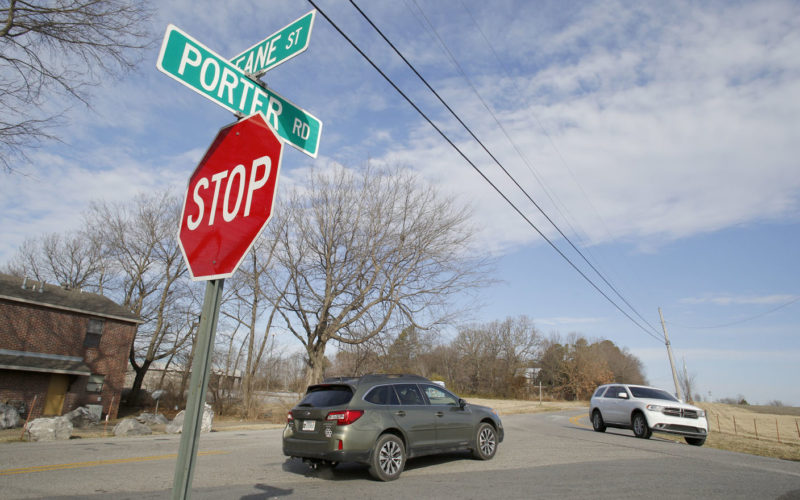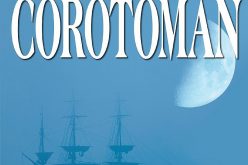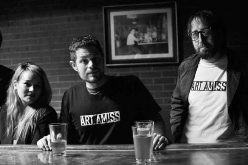Voters to decide transportation projects
STACY RYBURN
sryburn@nwadg.com

The Free Weekly/DAVID GOTTSCHALK
Traffic moves recently on Porter Road and Deane Street in Fayetteville. Fayetteville will ask voters April 9 to continue the city’s 1-cent sales tax in order to pay for nearly $74 million in transportation projects.
No matter where residents live or their financial situations, they have to get around town. Fayetteville city leaders want to make it easier with a proposed transportation bond program.
Voters will be asked April 9 to continue the city’s 1 percent sales tax to pay for about $226 million worth of projects. Early voting starts April 2. There will be 10 questions on the ballot, each pertaining to a different topic. The one for transportation is by far the largest.
Approval of the bond issue would mean more than $70 million in transportation work throughout the city. Corridors, sidewalks, bicycle lanes, new segments of road and maintenance needs are all a part of the program.
Residents approved a $65 million transportation bond issue in 2006, which was used to garner nearly $25 million in state and federal grants. Completed projects from that bond issue include the bridge to the Fulbright Expressway, segments of Rupple Road, Cato Springs Road improvements and the Old Wire Road and Mission Boulevard intersection.
City department heads anticipate securing about $16.8 million in grants for the next round of bond projects. The amount could go up or down, so there’s also a group of secondary projects in case money is freed up from partnerships or grants.
Each project is unique. Some already have design, planning or preliminary work started. Others are merely conceptual. A few projects are left over from the 2006 bond issue or have been on the city’s radar for years.
The City Council has to approve a design contract for every project. The plans for each are made available to the public as they’re created. It’s the duty of the council’s Transportation Committee to follow each project in detail.
The project list and its prioritization were born out of the two-year mobility plan the city adopted in March. Public input helped shape the plan.
Mayor Lioneld Jordan said the street improvements will be the most visible of the projects in the bond referendum.
“These projects run the gamut from major roadways such as 71B and the arterial loop, to improved sidewalk connectivity and bicycling tracks, to better signaling for increasing the walkability of our city,” he said. “These street improvements foster business activity and provide a safe way for people to get around — whether by foot, by car, by bike or on public transit.”

The Free Weekly/DAVID GOTTSCHALK
Traffic moves recently on Porter Road and Deane Street in Fayetteville. Fayetteville will ask voters April 9 to continue the city’s 1-cent sales tax in order to pay for nearly $74 million in transportation projects.
Corridor work
The largest piece of the pie, at $10 million, would go toward work along U.S. 71B running through Fayetteville. The city is in the middle of a study that will recommend work on and along the state highway, known as College Avenue, Archibald Yell Boulevard and School Avenue in the city.
The mobility plan took a look at the entire city and pointed out the streets, sidewalks and intersections that need work and what the needs are. The 71B plan will focus exclusively on the highway and recommend specific ways to address its needs.
The work is broken into two pieces. The northern piece covers College Avenue from North Street up to Lake Fayetteville. The second covers the southern part of town from Cato Springs Road to where Archibald Yell Boulevard touches Rock Street.
The city has already widened the sidewalks, added lights and planters and did curb and gutter work to College Avenue between Maple and North streets.
Garner Stoll, development services director, said the money will help start the first phase of a redevelopment plan for the corridor. The study looks at ways to alleviate congestion, improve aesthetics, enhance safety and usher development.
Consulting firm RDG Planning+Design has been working for months on the plan. The last round of public input is set to end this week, and the team will present a preliminary plan to the City Council in April.
“By having the corridor plan, it also opens up opportunities for additional resources — working with the state, working with federal money coming in and possibly even foundation money,” Stoll said.
Two projects totaling $8.8 million are set for Howard Nickell Road and its intersection at Arkansas 112. The city has received a large number of complaints about the area, City Engineer Chris Brown said.
A deal is underway to have the state assume part or all of the work associated with Howard Nickell Road. The money saved could be used for other projects, Brown said. In exchange, the city would take ownership of its portion of U.S. 71B, taking it out of the state highway system.
Anything the city wants to do with College Avenue now has to get state approval first. That includes any of the recommendations forthcoming with the corridor study, Brown said.
“It just takes out that layer of control and permitting and gives us a lot more flexibility to do things to that road that we wouldn’t otherwise be able to do, or would be difficult to do,” he said.
Another project estimated at $4.9 million would have Zion Road from Vantage Drive to Crossover Road get an overhaul. Design is complete and some work has started on the project because it was left over from the 2006 bond issue, Brown said.
Plans for the stretch include bicycle lanes and sidewalks on both sides, changing the alignment where it curves, adding a small roundabout at Old Missouri Road and turn lanes at the east end meeting Crossover Road, he said.
A stretch made up of Porter Road, Deane Street and Sycamore Street, from Mount Comfort Road to College Avenue, would get an upgrade. The $4.2 million proposal would hopefully help unclog congestion near Interstate 49 with a roundabout for the northbound on-ramp, Brown said.
Continuous sidewalks and bicycle lanes would go along Porter Road and Deane Street, he said. The short section of Garland Avenue connecting the corridor has needed a turn lane for years, and the four-lane section of Sycamore Street between Leverett and Gregg avenues is overbuilt, he said.
“It’s a corridor that’s got too many lanes, and not enough lanes, and missing sections of bike and pedestrian facilities, and congestion problems,” Brown said. “It’s kind of got a little bit of everything, depending on the segment.”
Other corridors
More than $7.6 million would be used to develop smaller corridors.
Rolling Hills Drive could extend through Fiesta Square and to Appleby Road. Some type of permanent accommodation for bicycles and pedestrians is planned, although city officials haven’t pinned down what it might look like. The street has $3.5 million allocated.
An ongoing bicycle lane pilot project from nonprofit bicycle advocacy group BikeNWA has neighbors split. City officials have said the project will stay for a year in order to collect data, which will be used to determine what’s appropriate for Rolling Hills.
North Street running from Garland Avenue to Old Wire Road also could get $3.42 million in work. The corridor has a lack of sidewalks, and the intersections at College Avenue and with Old Wire Road/Mission Boulevard need work, Brown said.
The mobility plan outlined safety improvements for Archibald Yell Boulevard from Martin Luther King Jr. Boulevard to Rock Street. Recommendations included a median, sidewalks, crosswalks and other features. The 71B Corridor Plan also will make recommendations on the stretch. The bond projects list has $700,000 allocated to that endeavor.
Another $5 million would be put toward pavement and overlays. Transportation Services Director Terry Gulley said asphalt has about a 15-year lifespan before it starts to deteriorate. His department gets about $2 million, covering about 10 miles, each year for overlay maintenance.
“We need to be doing 20 miles a year to not fall behind further,” Gulley said. “For the last 10 years, we’ve been doing 10 to 12. So we’re a little bit behind.”
The city hired a consultant late last year to do a pavement analysis and inventory for main roads. Department heads will use the information to pick which streets to overlay first.
Intersections
Along with the Howard Nickell Road and Arkansas 112, six other intersections are set for work. The total planned for intersections and traffic signals is $10.56 million.
The Center Street and Harmon Avenue intersection frequently has buses rolling through it and significant pedestrian traffic from student housing, Brown said. Room for turning buses is an issue, and pedestrians often don’t use the flashing crosswalk signal, he said.
A second left turn lane for traffic trying to get onto the bridge from Millsap Road is needed at the intersection with College Avenue, Brown said. The east side of Millsap across College Avenue also needs to be realigned, he said.
“If you can push more traffic east and west in a shorter amount of time, then you can put more green time north-south, and make that more efficient,” he said. “That’s the goal.”
City department heads have flirted with the idea of placing a roundabout at 15th Street and Razorback Road, near Baum-Walker Stadium. However, it seems a signaled intersection would be more appropriate, Brown said.
Cars routinely stack up where Shiloh Drive meets the Fulbright Expressway in front of the shopping center where Target is, Brown said. A small roundabout is proposed to handle the traffic that flows steadily from Gregg Avenue, he said.
Also, $1 million would go into a pot to build four or five new sets of traffic signals, with another $1 million planned to upgrade signals.
New segments
Filling in a missing segment of Rupple Road between Tanyard Drive and Weir Road has been on the city’s radar for years. A deal is in place with a developer who would pay for $2.3 million of the estimated $5 million needed to build the road.
The segment represents the last piece of the puzzle needed to complete the arterial loop. The loop is also known as the Mayor’s Box because it connects along main corridors running north, south, east and west around the city.
Preliminary design work has begun on an extension of Sain Street from Front Street to Joyce Boulevard. The Transportation Committee reviewed the plans Tuesday.
The Arkansas Department of Transportation also is working on a concept plan for Wedington Drive. Part of the plan involves removing the signal at Shiloh Drive and moving it to Steamboat Drive. A small connection is proposed from Steamboat Drive to Dorothy Jeanne Street, which would help create a network with the surrounding streets there, Brown said.
Bicycles, pedestrians and transit
More than $12.6 million is planned for alternative transportation.
The most ambitious project would put a bicycle track along Maple Street from Gregg Avenue to Stadium Drive running through campus. A preliminary deal would have the city put in $1 million with the university chipping in $1 million and the Walton Family Foundation providing a matching grant for the remaining $2 million. The foundation also provided a matching grant to design the track.
A cycle track is essentially a road for bicycles elevated slightly from the street. A two-way bicycle lane would go on the south side of the street, with new sidewalks on both sides. The car lanes would get realigned and some side streets would become one-way.
Work on a bicycle track on Old Wire Road from Ash Street to Gulley Park is happening now. Another section of the track connecting Gulley Park to Rolling Hills Drive is on the bond list. The work would include a traffic signal at Old Wire and Old Missouri roads, Brown said.
About $3 million would go toward building sidewalk connections and generally improving walkability downtown. Council member Matthew Petty requested the action during the council’s budget meeting last fall.
Martin Luther King Jr. Boulevard would also see its share of walkability improvements, with $1 million put in a pot toward that endeavor and $2 million set for bicycle and pedestrian connections at the Interstate 49 interchange.
About $1.75 million would be reserved for a bus rapid transit route along College Avenue and general transit needs throughout routes in the city. The money could be put toward recommendations from a study by the Northwest Arkansas Regional Planning Commission on bus rapid transit. A bus rapid transit system involves dedicated lanes for buses and bus stops designed to reduce traffic delays from passengers getting on and off a bus. Buses get priority through intersections.
Council member Sarah Marsh, who has advocated for expanding public transit in the city and making walking around the south part of town easier, said the money is much-needed to address those two issues.
A safe, well-functioning and inviting sidewalk network, especially along East Martin Luther King Jr. Boulevard, will create a network better designed to serve residents of all ages and abilities, Marsh said. The investment will connect the growing neighborhoods near the Jefferson Center to downtown, South School businesses, Happy Hollow Elementary School and Fayetteville High School, making it easier to access parks and trails, she said.
The transit money would go toward bus shelters, benches and route and wayfinding signs. Making transit in the city more visible and easy to use will support its success, Marsh said.






